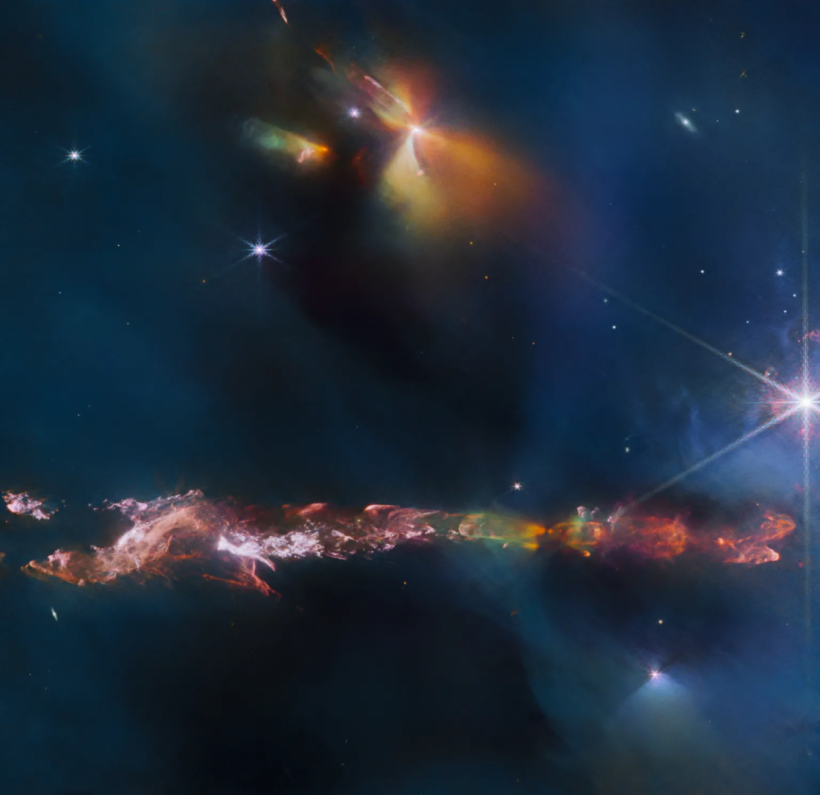NASA's James Webb Space Telescope has presented a captivating new display of star formation in its latest Picture of the Month. The featured image focuses on the intricate details of the Herbig Haro object 797 (HH 797).
NASA explains that Herbig-Haro objects are luminous regions surrounding newborn stars, scientifically called protostars. These objects are formed when stellar winds or jets of gas emitted by these nascent stars create shockwaves upon colliding with nearby gas and dust at high velocities.

The NASA/ESA/CSA James Webb Space Telescope unveils detailed features of Herbig Haro object 797 (HH 797). Herbig-Haro objects, which are luminous areas encircling newborn stars or protostars, originate when stellar winds or gas jets from these stars collide with nearby gas and dust, generating shockwaves at high speeds.
Edge of the Perseus Dark Cloud Complex
HH 797, prominently featured in the lower half of the image, is situated near the young open star cluster IC 348, which is positioned near the eastern edge of the Perseus dark cloud complex.
The upper portion of the photo showcases bright infrared objects believed to host two additional protostars. The image leverages the power of infrared imaging to study newborn stars and their outflows thanks to Webb's Near-InfraRed Camera (NIRCam).
This is significant because the youngest stars are typically still entangled within the gas and dust from which they originate. According to NASA, infrared emissions from the star's outflows can pass through the obstructing gas and dust, rendering Herbig-Haro objects ideal subjects for observation with Webb's sensitive infrared instruments.
The tumultuous environments in these areas stimulate molecules, such as molecular hydrogen and carbon monoxide, inducing them to release infrared light. Webb captures this emitted light to depict the configuration of the outflows.
NIRCam, specifically proficient in observing heated molecules activated by shocks, achieves this at temperatures soaring to thousands of degrees Celsius. Previous ground-based observations indicated that the cold molecular gas associated with HH 797 exhibited a notable distribution.
Red-shifted gas (moving away from us) was primarily found to the south (bottom right), while blue-shifted gas (moving towards us) was prevalent to the north (bottom left).
Parallel Outflows
In this higher-resolution image from Webb, astronomers have identified a significant revelation. What was initially perceived as a single outflow is composed of two nearly parallel outflows, each with its distinct series of shocks, which explains the velocity asymmetries observed.
The source, situated in the small dark area at the bottom right of the center, is not a lone star. It's a binary star system, and each star produces its own remarkable outflow. The image highlights additional outflows, including one from the protostar at the upper right of the center, accompanied by its illuminated cavity walls.
HH 797 is directly situated north of HH 211, the focus of a prior Webb image release in September, emphasizing the telescope's ongoing dedication to unraveling the enigmas of our cosmic environs.
Related Article: NASA's James Webb Discovers New, Never-Before-Seen Feature in Jupiter's Atmosphere-What Is It?










